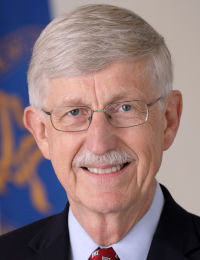
As coronavirus infections rise nationwide, health care journalists have an important role in explaining the science behind the development, safety and effectiveness of COVID-19 vaccines, said Francis S. Collins, M.D., Ph.D., the director of the National Institutes of Health.
As the Nov. 18 keynote speaker at AHCJ’s Journalism Summit on Infectious Disease, Collins gave a stark warning for journalists and all Americans about the need to recognize the value of the vaccines as they are rolled out in the coming months.
It would be one of the greatest tragedies in history if scientists develop an effective vaccine and manufacture enough doses to vaccinate a significant proportion of the U.S. population ― only to have a sizable proportion of Americans reject vaccination due to safety concerns, Collins said.
“Then this epidemic goes on and on and on,” Collins said. “I dearly hope that’s not what we’re looking at here.”
To counter that concern, Collins detailed some of the steps that the NIH, Food and Drug Administration and vaccine manufacturers have taken to ensure that COVID vaccines will be safe, effective, and available in sufficient numbers to inoculate most Americans. At the same time, he warned that no vaccine is 100% effective.
Answering questions from session moderator and independent journalist Maryn McKenna, Collins outlined how the federal government’s Operation Warp Speed aims to produce 300 million doses of COVID-19 vaccine. The goal is to make the initial shots available as soon as next month if approved.
“I give the FDA a lot of credit for setting clear guidelines about what their expectations were going to be for the safety and the efficacy data and not leaving that to chance or some concerns about political manipulation,” he said.
As health care journalists reported this month, Pfizer and Moderna announced the initial data from their separate phase three clinical trials for their respective Covid vaccines.
To effectively assess each vaccine’s safety, the FDA required developers to show at least two months’ worth of safety data on at least half of their trial participants. “That will be just about right because Pfizer and Moderna both will be in that two-month period over the next couple of weeks,” Collins said.
Because the FDA already is reviewing preliminary data from the two companies, Collins does not expect a delay in having the FDA issue emergency use authorizations (EUAs) for those products. “It’s all coming together really well,” he said.
In Nature magazine last week, Ewen Callaway described the implications of Pfizer’s announcement, and Helen Branswell at Stat reported that Pfizer may file for its EUA within days. In The New York Times, Denise Brady explained that both Moderna and Pfizer exceeded the FDA’s requirement that the COVID vaccines be at least 50% effective. Moderna is working in partnership with BioNTech of Germany.
Once the vaccines are approved for use, the government could begin distribution as early as December. When that happens, journalists, government officials, and NIH scientists will face the challenge of persuading vaccine skeptics that the shots are safe and effective.
McKenna asked Collins which facts he thinks journalists should emphasize when reporting on these developments.
“First of all, I don’t in any way want to put down the concerns that people have had about how this process is going,” Collins said. “It doesn’t help to just say to people, ‘Oh, you’re just being silly about this.’ People have legitimate concerns about whether this process is being done right.”
He noted the concern by some that the developmental process was rushed for political reasons and not driven by science, but he countered that, in his view, the process has been driven entirely by science. “I can promise you that,” he said.
Collins noted that Americans who get much of their news from social media may have developed misconceptions based on conspiracy theories about vaccine development. “So, we have work to do to replace those somewhat nebulous concerns and some conspiracy misconceptions with the facts,” he said.
He advised journalists to explain the public health concerns of not getting vaccinated, as well as failing to follow other safety practices designed to stop the spread of the virus. “This is the time to hit hard on those public health measures and the fact that they’re not just nice ideas,” Collins said. “There is data behind them.”
“If you want to save lives, you need to adopt those measures,” he added. “Otherwise, you may be the next superspreader that could cause terrible outcomes for people you care about. All of that has to be said over and over again, and in a fashion that doesn’t put down the people who are skeptical.”
Registration for the Journalism Summit on Infectious Disease is available through Nov. 19 and gives registrants access to recordings of all four days of sessions, which began Nov. 16.








